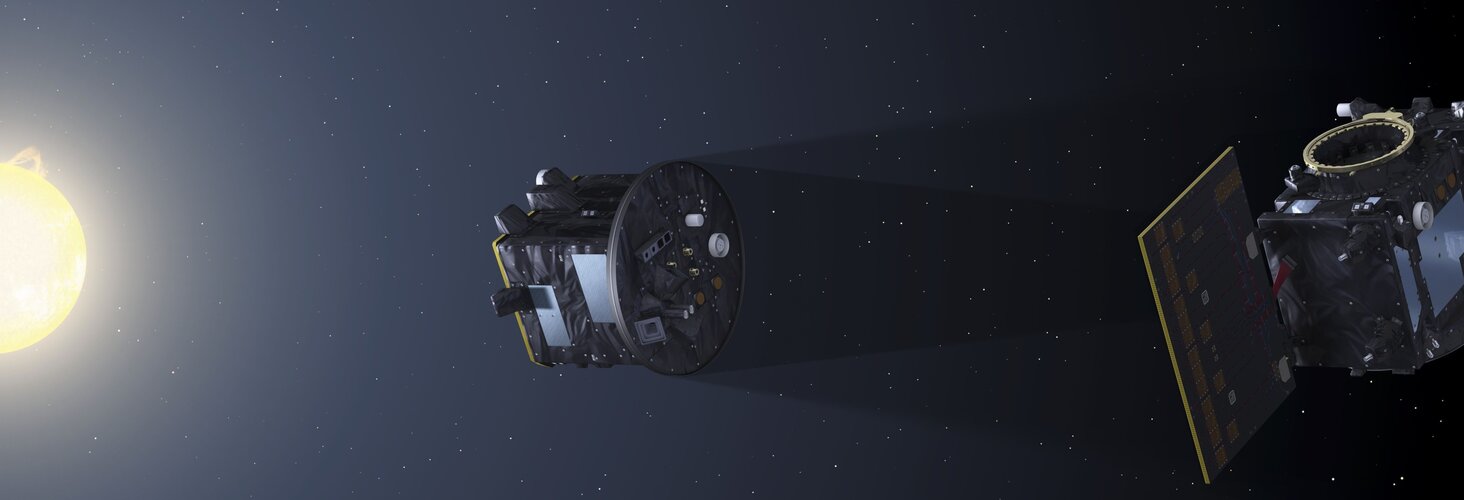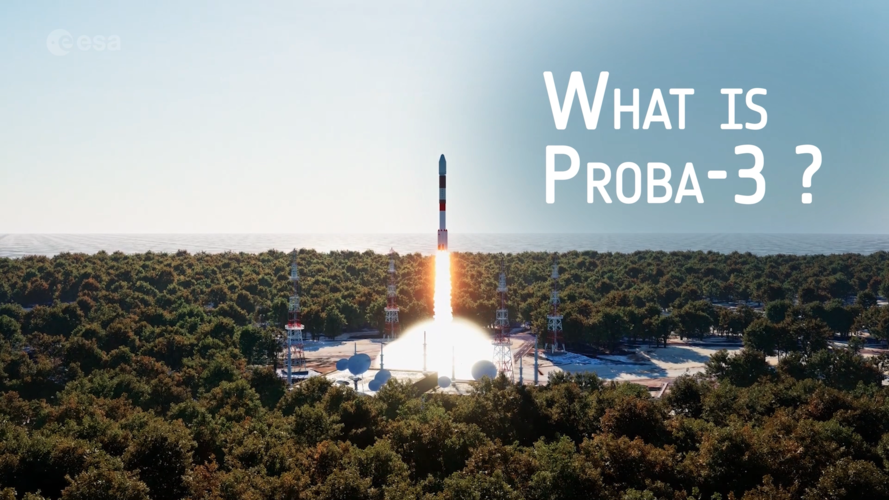
Copernical Team
Long March 3B reaches 100th launch milestone
 China successfully launched a Long March 3B rocket on Tuesday afternoon from the Xichang Satellite Launch Center in Sichuan province, delivering an experimental satellite, Communication Technology Demonstrator 13, into its intended orbit, according to China Aerospace Science and Technology Corp.
The rocket lifted off at 1:56 pm, marking a significant achievement as the 100th launch of the
China successfully launched a Long March 3B rocket on Tuesday afternoon from the Xichang Satellite Launch Center in Sichuan province, delivering an experimental satellite, Communication Technology Demonstrator 13, into its intended orbit, according to China Aerospace Science and Technology Corp.
The rocket lifted off at 1:56 pm, marking a significant achievement as the 100th launch of the Primary investigation highlights potential of Ram-Rotor Detonation Engine
 Detonation, a supersonic combustion wave driven by shock waves and chemical energy, is a powerful means of converting chemical energy into thrust. This method has long been explored to enhance aerospace propulsion by improving thermodynamic cycle efficiency. Since the 1950s, various detonation engines, such as pulse detonation engines, oblique detonation engines, and rotating detonation engines,
Detonation, a supersonic combustion wave driven by shock waves and chemical energy, is a powerful means of converting chemical energy into thrust. This method has long been explored to enhance aerospace propulsion by improving thermodynamic cycle efficiency. Since the 1950s, various detonation engines, such as pulse detonation engines, oblique detonation engines, and rotating detonation engines, Three Ways to Track Venusquakes, from Balloons to Satellites
 Instruments aboard robotic landers have measured seismicity on the Moon and Mars, helping researchers learn about the inner workings of those celestial bodies. But the internal makeup of Venus is still not known, in part because high winds and blistering temperatures make it significantly more difficult to detect quakes on the second planet from the Sun.
Three approaches to studying quakes
Instruments aboard robotic landers have measured seismicity on the Moon and Mars, helping researchers learn about the inner workings of those celestial bodies. But the internal makeup of Venus is still not known, in part because high winds and blistering temperatures make it significantly more difficult to detect quakes on the second planet from the Sun.
Three approaches to studying quakes European rocket carries scientific experiments to microgravity
 The SubOrbital Express-4 sounding rocket launched successfully from Sweden's Esrange Space Center near Kiruna at 06:00 CET yesterday, achieving a peak altitude of 256 kilometers. The mission provided approximately six minutes of microgravity for six onboard scientific experiments before returning to Earth.
Challenging weather conditions overnight added suspense to the highly anticipated la
The SubOrbital Express-4 sounding rocket launched successfully from Sweden's Esrange Space Center near Kiruna at 06:00 CET yesterday, achieving a peak altitude of 256 kilometers. The mission provided approximately six minutes of microgravity for six onboard scientific experiments before returning to Earth.
Challenging weather conditions overnight added suspense to the highly anticipated la Five space mysteries Proba-3 will help solve

ESA’s Proba-3 will be the first mission to create an artificial total solar eclipse by flying a pair of satellites 150 metres apart. For six hours at a time, it will be able to see the Sun’s faint atmosphere, the corona, in the hard-to-observe region between the Sun’s edge and 1.4 million kilometres from its surface. This new technology combined with the satellite pair’s unique extended orbit around Earth will allow Proba-3 to do important science, revealing secrets of the Sun, space weather and Earth’s radiation belts.
Creating artificial eclipses to study the Sun | Proba-3 explained
 Video:
00:09:01
Video:
00:09:01
Proba-3 is such an ambitious mission that it needs more than one single spacecraft to succeed. In order for Proba-3’s Coronagraph spacecraft to observe the Sun’s faint surrounding atmosphere, its disk-bearing Occulter spacecraft must block out the fiery solar disk. This means Proba-3’s Occulter ends up facing the Sun continuously, making it a valuable platform for science in its own right.
Proba-3 is scheduled for launch on a PSLV-XL rocket from Satish Dhawan Space Centre in Sriharikota, India, on Wednesday, 4 December, at 11:38 CET (10:38 GMT, 16:08 local time).
Research study sets path for a global 5G space network

Researchers have achieved a breakthrough by mapping out the future of space-enabled 5G telecommunications. The 5G Infrastructure Study (5G-IS), funded by ESA's Connectivity and Secure Communications directorate, provides a comprehensive blueprint for delivering reliable connectivity worldwide.
India's Gaganyatris complete initial astronaut training for ISRO-NASA mission to ISS
 ISRO Update: Towards the goal of accomplishing a joint ISRO-NASA mission to the International Space Station, two Gaganyatris (Prime-Group Captain Shubhanshu Shukla and Backup-Group Captain Prasanth Balakrishnan Nair) assigned for Axiom Mission 4 (Ax-4) have successfully completed their initial phase of training in the United States, which began in the first week of August, 2024.
India's jo
ISRO Update: Towards the goal of accomplishing a joint ISRO-NASA mission to the International Space Station, two Gaganyatris (Prime-Group Captain Shubhanshu Shukla and Backup-Group Captain Prasanth Balakrishnan Nair) assigned for Axiom Mission 4 (Ax-4) have successfully completed their initial phase of training in the United States, which began in the first week of August, 2024.
India's jo BepiColombo collects data during its fifth Mercury flyby
 BepiColombo successfully completed its fifth flyby of Mercury on December 1, 2024, passing between the planet and the Sun and reaching a closest approach of 37,630 kilometers at 15:23 CET. This flyby marks another milestone in the spacecraft's journey toward entering orbit around Mercury in 2026.
BepiColombo successfully completed its fifth flyby of Mercury on December 1, 2024, passing between the planet and the Sun and reaching a closest approach of 37,630 kilometers at 15:23 CET. This flyby marks another milestone in the spacecraft's journey toward entering orbit around Mercury in 2026. Taiwan's space sector gains momentum as Foxconn unveils advanced technologies at TASTI 2024
 Hon Hai Technology Group, widely known as Foxconn (TWSE:2317), has showcased its latest advancements in space technology at the second annual Taiwan International Assembly of Space Science, Technology, and Industry (TASTI). As a title sponsor of the event, Foxconn emphasized its growing contributions to the satellite ecosystem and its commitment to elevating Taiwan's space industry on the global
Hon Hai Technology Group, widely known as Foxconn (TWSE:2317), has showcased its latest advancements in space technology at the second annual Taiwan International Assembly of Space Science, Technology, and Industry (TASTI). As a title sponsor of the event, Foxconn emphasized its growing contributions to the satellite ecosystem and its commitment to elevating Taiwan's space industry on the global 































